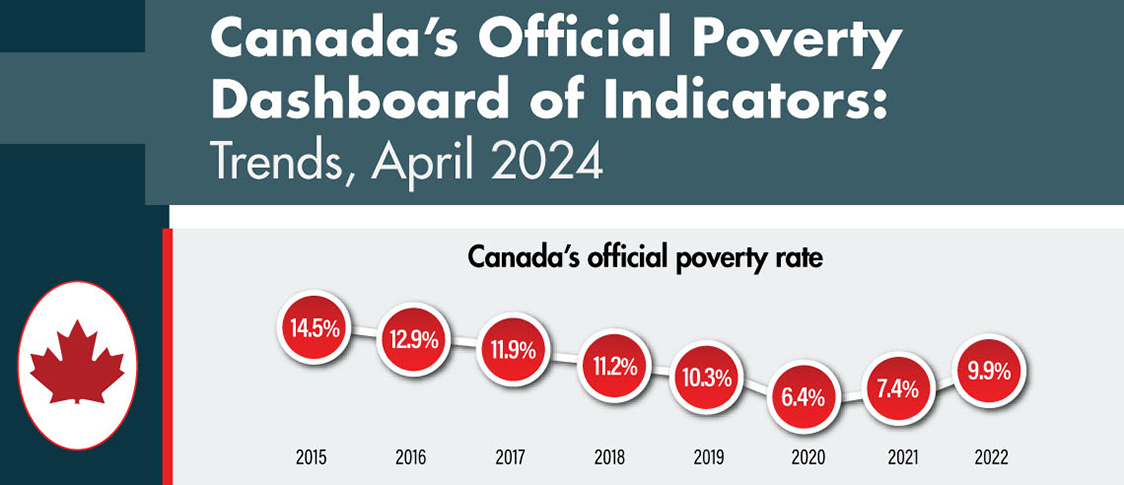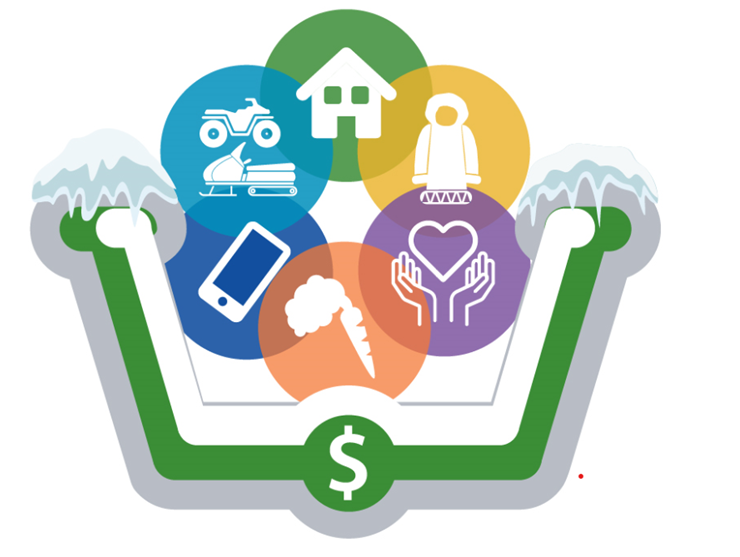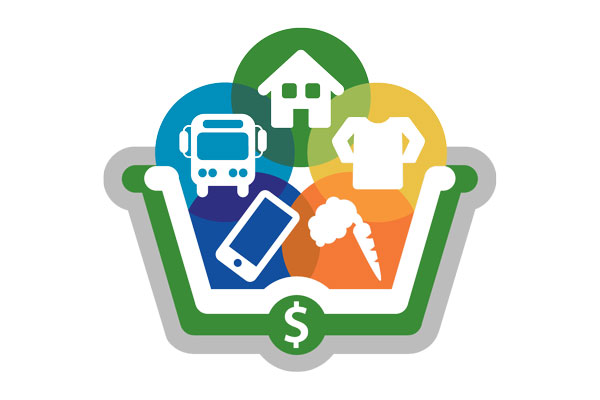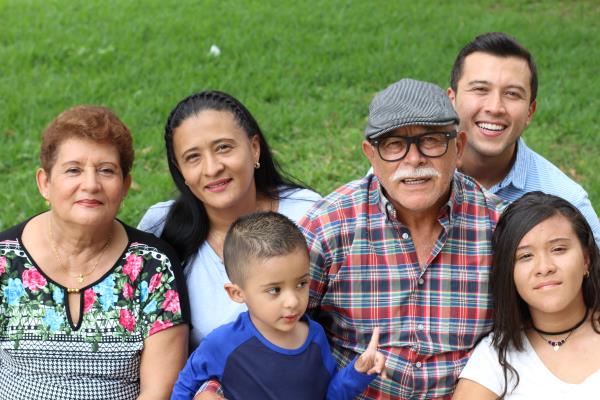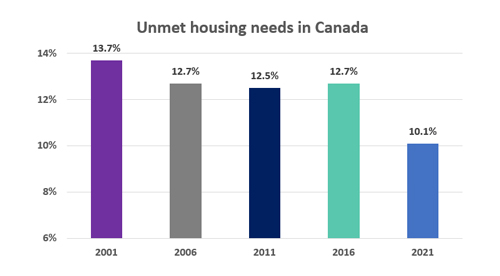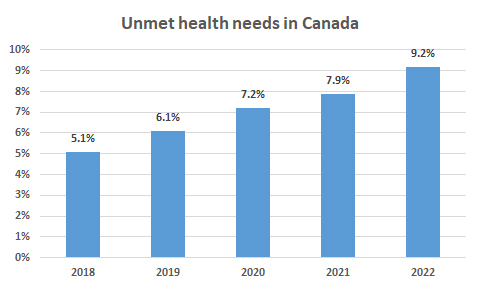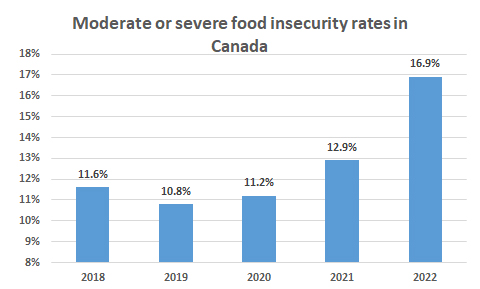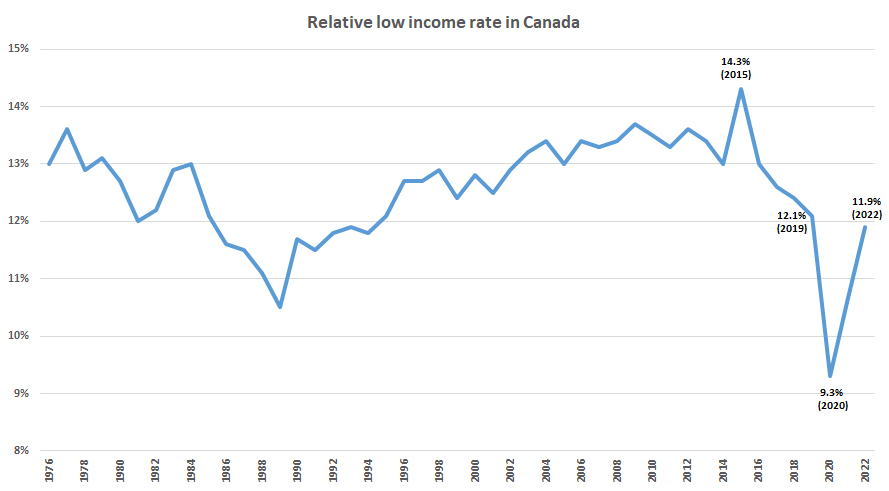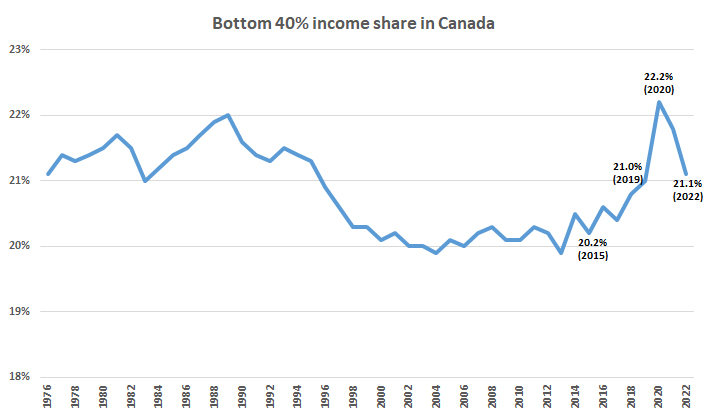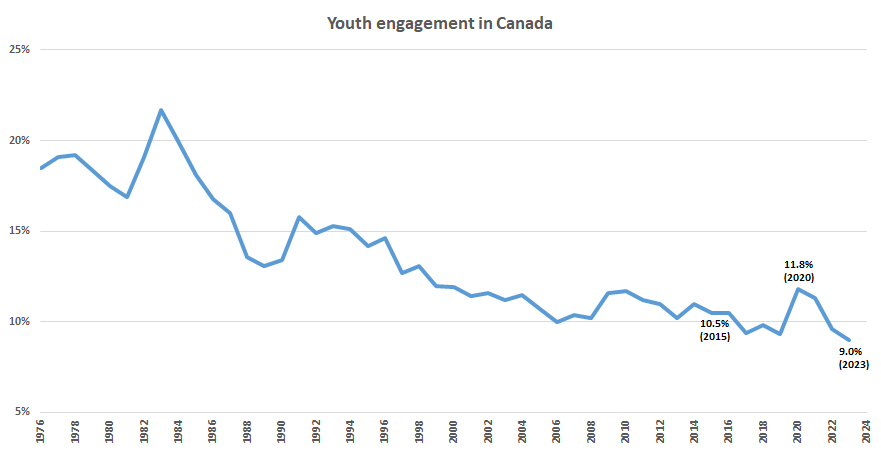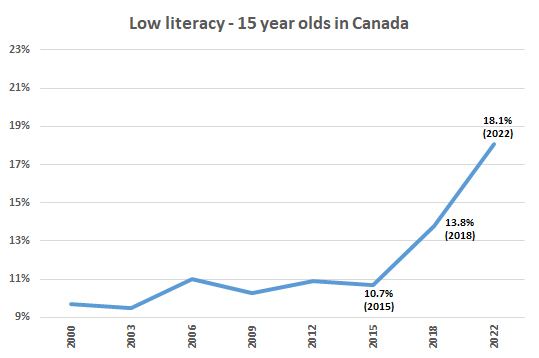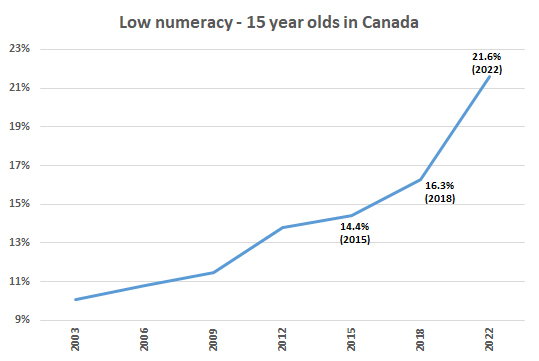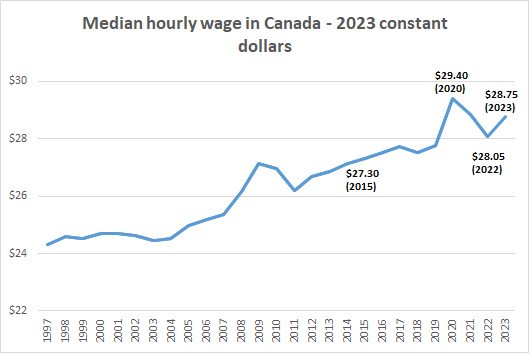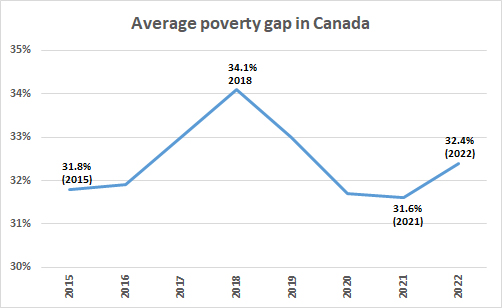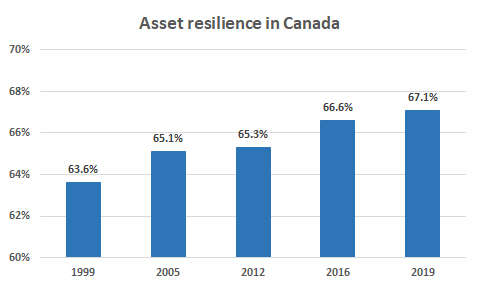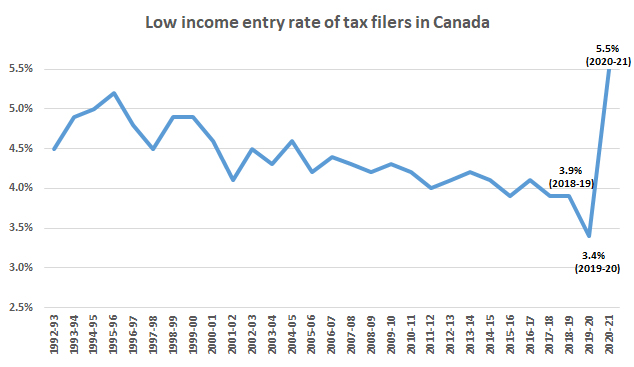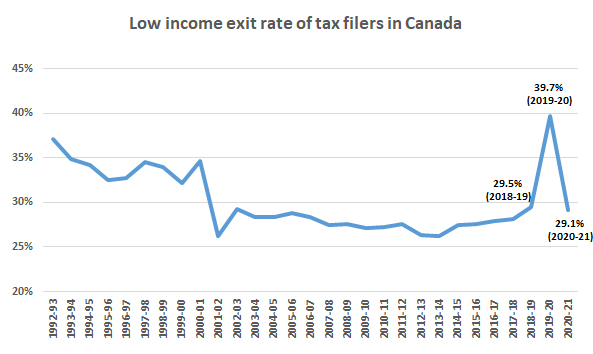Dimensions of Poverty Hub
Follow:
Sign up to My StatCan to get updates in real-time.
Canada's Official Poverty Line

Description - Canada's Official Poverty Line
- This line chart shows the poverty rate in Canada over time.
- It has a vertical axis showing percentages, from 4% to 16%, by increments of 2 percentage points.
- It has a horizontal axis showing years, from 2012 to 2022, by increments of 1 year.
- The line shows a general downward trend in the poverty rate until 2020, followed by increases in 2021 and 2022. The following data points are highlighted: 14.5% in 2015, 10.3% in 2019, 6.4% in 2020 (the lowest point on the graph) and 9.9% in 2022.
In 2022, 9.9% of Canadians lived in poverty, up from 7.4% in 2021. More information on Canada's Official Poverty Line
Features
Canada's Official Poverty Dashboard
"Opportunity for All" introduces a dashboard of 12 indicators to track progress on deep income poverty as well as the aspects of poverty other than income, including indicators of material deprivation, lack of opportunity and resilience.
Dignity

Lifting Canadians out of poverty by ensuring basic needs — such as safe and affordable housing, healthy food and health care — are met.
Deep income poverty
In 2022, 5.0% of Canadians were living in deep income poverty, up from 3.6% in 2021. More information on Deep poverty
Unmet housing needs and chronic homelessness
In 2021, 10.1% of Canadian households experienced core housing needs, down from 12.7% in 2016. More information on Unmet housing needs and chronic homelessness
Unmet health needs
In 2022, 9.2% of persons aged 15 years and over reported experiencing unmet health care needs, up from 7.9% in 2021. More information on Unmet health needs
Food insecurity
In 2022, 16.9% of Canadians lived in households that had experienced moderate or severe food insecurity, up from 12.9% in 2021. More information on food insecurity
Opportunity and inclusion

Helping Canadians join the middle class by promoting full participation in society and equality of opportunity.
Relative low income
In 2022, 11.9% of Canadians had less than half the median after-tax income, up from 10.6% in 2021. More information on Relative low income
Bottom 40% income share
In 2022, 21.1% of total after-tax income went to Canadians in the bottom 40% of the income distribution, down from 21.8% in 2021. More information on Bottom 40% income share
Youth engagement
In 2023, 9.0% of Canadian youth (aged 15 to 24) were not in employment, education or training, down from 9.6% in 2022. More information on Youth engagement
Literacy and numeracy
In 2022, 18.1% of 15-year-old Canadians had low literacy skills, up from 13.8% in 2018. The percentage of adults (aged 16 to 65) with low literacy skills was 16.4% in 2012.
Among 15-year-old Canadians, 21.6% had low numeracy skills in 2022, an increase from 16.3% in 2018. The percentage of adults (aged 16 to 65) with low numeracy skills was 22.4% in 2012. More information on Literacy and numeracy
Resilience and security

Supporting the middle class by protecting Canadians from falling into poverty and by supporting income security and resilience.
Median hourly wage
In 2023, the median hourly wage for Canadian employees was $28.75, up from $28.05 in 2022 (in 2023 dollars). More information on Median hourly wage
Average poverty gap
In 2022, Canadians who lived in families with incomes below Canada's Official Poverty Line were, on average, 32.4% below this line, a slight increase from 2021 (31.6%). More information on Average poverty gap
Asset resilience
In 2019, 67.1% of Canadians were asset resilient in 2019, up from 66.6% in 2016, meaning they had enough savings to cover three months of the low income measure. More information on Asset resilience
Low income entry and exit rates
Between 2020 and 2021, 5.5% of tax filers (1.32 million), who were not in low income in 2020, entered low income in 2021.
Between 2020 and 2021, 29.1% of tax filers (970,000), who were in low income in 2020, left low income in 2021. More information on Low income entry and exit rates
Opportunity for All – Canada's First Poverty Reduction Strategy
In August 2018, the Canadian government released "Opportunity for All – Canada's First Poverty Reduction Strategy". "Opportunity for All" is a whole-of-government strategy that involves actions and investments that span across the federal government.
Gender, diversity and inclusion statistics
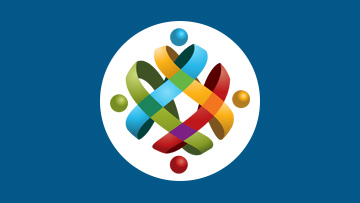
Visit Gender, diversity and inclusion statistics for information on socio-demographic characteristics that can intersect with poverty.
Sustainable Development Goals and Poverty
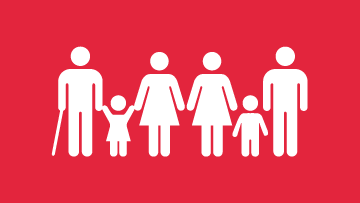
Goal 1 - No poverty of the Sustainable Development Goals is to end poverty in all its forms everywhere.

 Access to health care
Access to health care Food insecurity
Food insecurity Income inequality
Income inequality Literacy
Literacy Low income
Low income Minimum wage or low-paid work
Minimum wage or low-paid work